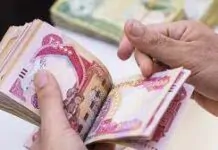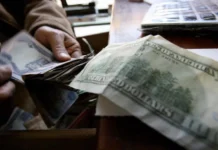Good Evening ,
China’s Golden Gamble: Quietly Building a Global Finance Powerhouse
Beijing’s aggressive gold accumulation underscores its ambition to reshape monetary dominance — beyond just the yuan.
Overview
- China’s central bank has now purchased gold for 10+ consecutive months, steadily growing its bullion reserves.
- Official gold holdings recently hit ~2,303.5 tonnes, according to data on ETF inflows and reserve reports.
- Chinese gold ETFs are booming, with 164% growth year-to-date, signaling strong domestic investor demand.
- Global diversification motive: These purchases align with Beijing’s push to reduce reliance on the U.S. dollar and strengthen its reserve strategy.
- Analysts warn the real total could be significantly higher, with estimations suggesting China may be holding far more gold than disclosed.
Key Developments
- The People’s Bank of China (PBOC) added gold for a seventh month in May, boosting holdings to ~73.83 million fine troy ounces.
- By August, China extended that streak to 10 straight months, holding ~74.02 million fine troy ounces.
- As of September, reserve estimates (from external analysts) suggest China added ~15 tonnes, possibly under-reported inofficially.
- In parallel, Chinese gold ETFs saw record inflows: in Q1 2025, inflows reached RMB 16.7 bn, corresponding to ~23 tonnes added.
- Data from the World Gold Council shows China’s portion of gold in its reserves is rising, even as global central banks continue strong gold buybacks.
Why It Matters
China’s systematic gold accumulation is more than just a hedge — it’s a strategic play. By quietly building its reserves, Beijing is positioning itself to reduce dependence on dollar-denominated assets, reinforce its financial autonomy, and potentially validate its currency and geopolitical ambitions in a world where gold retains symbolic and practical power.
Implications for the Global Reset
Pillar 1 — Currency Fragmentation
China’s aggressive gold hoard supports its broader de-dollarization agenda. More gold on its balance sheet strengthens its financial sovereignty and reduces the risk of U.S.-led economic coercion.
Pillar 2 — Reserve Reallocation
As China shifts more of its reserves into gold, it challenges the traditional reserve asset hierarchy. This reallocation could spur other nations to rethink the composition of their sovereign reserves and accelerate a global pivot toward hard assets.
This is not just politics — it’s global finance restructuring before our eyes.
Seeds of Wisdom Team
Newshounds News™ Exclusive
Sources
- InvestingLive – “China’s gold holdings surge as ETFs and central bank boost reserves despite weaker demand”
- Bloomberg – “China’s Central Bank Extends Gold-Buying Spree to 10 Months”
- Bloomberg – “China’s PBOC Keeps Buying Gold as Reserves Grow For Eighth Month”
- Business Standard – “China’s central bank buys gold in August for 10th consecutive month”
- Gold.org – “Central Bank Gold Statistics, March 2025”
- DiscoveryAlert – “China Boosts Gold Reserves by 15 Tons in September 2025”
~~~~~~~~~~
BRICS Fast-Track De-Dollarization: Russia Now Settles Up to 95% of Trade With China & India in Local Currencies
As BRICS accelerates financial integration, Moscow is shifting nearly all major trade flows away from the U.S. dollar — strengthening the bloc’s parallel monetary architecture.
Overview
- Russia reports that 90–95% of its trade with China and India is now handled in rubles, rupees, and yuan.
- The BRICS bloc continues pushing coordinated de-dollarization, expanding settlement systems and local-currency financing mechanisms.
- Indonesia becomes the newest BRICS member to integrate yuan-based foreign exchange operations, further reducing the role of the U.S. dollar in regional trade.
- The New Development Bank (NDB) is scaling up local-currency loan programs, reducing dependence on Western institutions and SWIFT-linked financing.
- Academic research shows BRICS is building the most significant non-Western financial framework in decades, though the process remains gradual.
Key Developments
- Russia’s Deputy Prime Minister has confirmed that trade with China and India is now overwhelmingly conducted in local currencies, bypassing dollar-denominated transactions.
- BRICS leaders emphasized at their 2025 Summit that local-currency settlement is becoming the bloc’s default practice, not an exception.
- Member states continue expanding alternative payment infrastructure, including:
- Russia’s SPFS system
- China’s CIPS system
- Bilateral currency-swap lines between BRICS central banks
- Indonesia announced it will launch yuan- and yen-based foreign exchange operations, enabling direct settlement without converting into dollars.
- Local-currency usage between Indonesia and China has already reached $1 billion per month — and demand is expected to grow significantly.
- Policymakers across BRICS describe these steps as part of a broader effort to reduce exposure to U.S.-centric financial leverage and sanctions systems.
Why It Matters
This rapid increase in local-currency settlements represents more than a shift in trade mechanics — it signals a fundamental reordering of global financial power. BRICS nations are building the architecture to operate independently of the dollar system, reducing reliance on Western intermediaries and creating a parallel financial world that can operate even under geopolitical strain.
Implications for the Global Reset
Pillar 1 — Currency Fragmentation
BRICS is accelerating a structural breakaway from dollar centrality. As more trade settles in yuan, rupees, and rubles, the global monetary landscape becomes more fragmented — and less dominated by a single reserve currency.
Pillar 2 — Financial Sovereignty
By developing their own payment rails, swap lines, and local-currency funding models, BRICS nations are building safeguards against Western sanctions and financial pressure. This move strengthens the bloc’s collective leverage and shifts long-term financial influence away from Washington.
This is not just politics — it’s global finance restructuring before our eyes.
Seeds of Wisdom Team
Newshounds News™ Exclusive
Sources
- The Daily Hodl – “BRICS Nation Russia Accelerates De-Dollarization, Says 95% of Trade With China and India Now in Local Currencies”
- Watcher Guru – “90% of Deals Paid in Local Currencies: Russia at BRICS 2025 Summit”
- Watcher Guru – “BRICS Country Turns to Chinese Yuan To Cut US Dollar Dependency”
- Frontiers in Political Science – “The Evolution of Financial Architecture Supporting the BRICS”
- Ainvest – “Geopolitical Currency Shifts and BRICS Alignment”
~~~~~~~~~~
Seeds of Wisdom Team RV Currency Facts Youtube and Rumble
Newshound’s News Telegram Room Link
RV Facts with Proof Links Link
RV Updates Proof links – Facts Link
Follow the Gold/Silver Rate COMEX
Follow Fast Facts
Seeds of Wisdom Team™ Website






